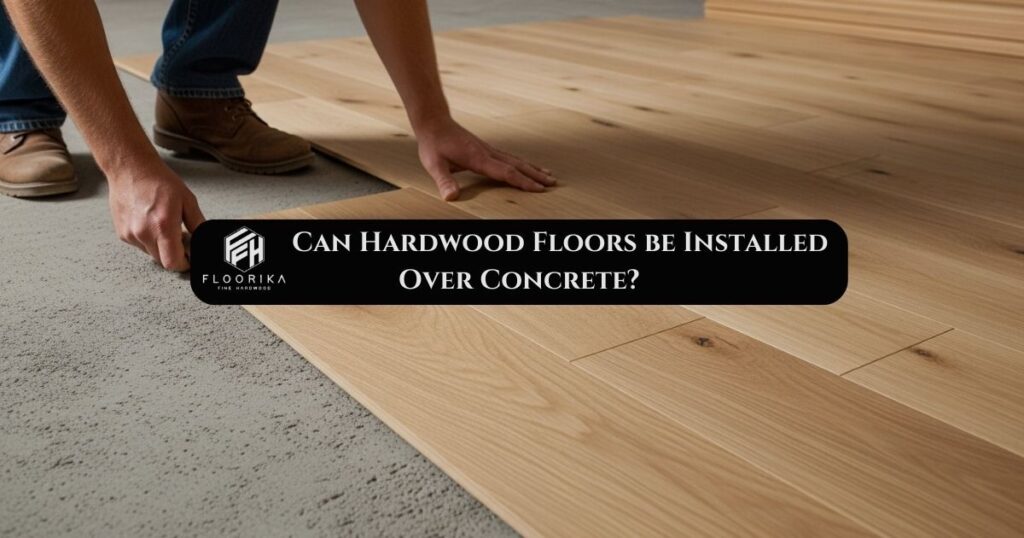If you’re looking to protect hardwood floors in Brooklyn, one of the first questions you might face is whether hardwood flooring can be installed over concrete. It’s a common concern among homeowners in the city, especially in brownstones, basement units, and high-rise apartments, where concrete subfloors are the norm. While the process involves careful planning and specific materials, the good news is yes, hardwood floors can be installed over concrete. But doing it right is key to long-term durability and beauty.
This guide will explore the types of hardwood suitable for concrete, the necessary preparation steps, the installation methods, and how to ensure your new floors remain in top condition for years.
Solid vs. Engineered Hardwood: Which Is Better Over Concrete?
When it comes to hardwood flooring over concrete, engineered hardwood is the best option. Here’s why:
Engineered Hardwood
- Structure: Made from layers of plywood or high-density fiberboard (HDF) with a real hardwood veneer on top.
- Stability: More dimensionally stable and less prone to warping with humidity changes.
- Installation: Can be glued down or floated over concrete.
Solid Hardwood
- Structure: A single piece of wood from top to bottom.
- Challenges: Prone to expansion and contraction due to moisture. Generally not recommended for below-grade installations (like basements) or high-moisture areas.
- Installation: Typically requires a plywood subfloor, which adds height and cost.
Conclusion: If you’re set on installing hardwood over concrete, engineered hardwood offers greater flexibility, easier installation, and better long-term performance.
Step-by-Step Guide to Installing Hardwood Over Concrete
Test for Moisture
Before installation, it’s important to test the concrete for moisture. Excess moisture can damage the wood, cause warping, or lead to mold growth.
- Use a moisture meter or calcium chloride test.
- Ideal moisture levels for hardwood installation are below 3 lbs per 1,000 square feet over 24 hours for calcium chloride or less than 4% for moisture meters.
Prepare the Concrete Surface
The concrete must be clean, level, and dry before proceeding.
- Remove any old adhesive or debris.
- Fill cracks or holes with patching compound.
- Use a leveling compound if necessary. The floor should be flat within 1/8 inch over 6 feet.
Install a Moisture Barrier
This step protects your hardwood from moisture migrating up through the concrete.
- For glue-down installations, use a moisture-blocking adhesive.
- For floating floors, lay a 6 mil polyethylene plastic sheet or a specialized underlayment with a vapor barrier.
Choose the Right Installation Method
There are three primary installation options:
Glue-Down Method
- Engineered hardwood is adhered directly to the concrete using a moisture-resistant adhesive.
- Ideal for lower ceilings where adding a subfloor isn’t possible.
- Requires precision and professional tools.
Floating Floor
- Boards are not attached to the subfloor but are locked together.
- Uses a click-lock system or tongue-and-groove joints.
- Underlayment with a moisture barrier is essential.
Nail-Down (with Subfloor)
- Requires installing a plywood subfloor over the concrete.
- Adds height and cost.
- More common for solid hardwood, but not recommended directly over concrete without proper separation.
Also Read: What Are The Environmental Impacts Of Having Hardwood Flooring?
Tips to Protect Hardwood Floors in Brooklyn
New York’s seasonal humidity shifts, steam heat, and the occasional leaky pipe can all take a toll on your hardwood. Here’s how to protect your investment:
Control Humidity
- Use a humidifier in winter and a dehumidifier in summer.
- Aim for indoor humidity levels between 35–55%.
Clean Spills Immediately
- Even engineered hardwood can warp if exposed to standing water.
- Use a dry or slightly damp cloth, never a wet mop.
Use Protective Pads
- Add felt pads to furniture legs to prevent scratches.
- Place rugs in high-traffic areas, but avoid rubber-backed rugs that trap moisture.
Refinish as Needed
- Engineered floors can be sanded (depending on veneer thickness) but not as often as solid hardwood.
- Refinish every 10–20 years, depending on wear.
Common Mistakes to Avoid
Even a well-researched DIYer can fall into traps. Avoid these pitfalls:
- Skipping the moisture test: This is the number one cause of failure.
- Choosing the wrong hardwood: Solid hardwood over concrete is risky without a subfloor.
- Improper acclimation: Let your hardwood sit in the room for 3–5 days to adjust to the humidity before installation.
- Using the wrong adhesive: Only use adhesives designed for hardwood over concrete.
Professional Installation vs. DIY
While it’s possible to install hardwood over concrete yourself, hiring a professional is often the safer bet, especially in areas like Brooklyn, where building codes, HOA rules, and structural quirks can complicate things.
Benefits of Professional Installation:
- Moisture mitigation expertise
- Access to commercial-grade adhesives and tools
- Warranty on labor and materials
- Compliance with local regulations
Ready To Install Hardwood Over Concrete?
Transform your space with the elegance of hardwood flooring. At Floorika Fine Hardwood, we expertly install hardwood floors over concrete. Whether you’re renovating a Brooklyn brownstone or updating a modern loft, our team ensures precision, durability, and beauty in every project. We specialize in engineered hardwood installation that is perfect for concrete subfloors. Ready to upgrade your floors? Contact us today for a consultation and experience the difference.




